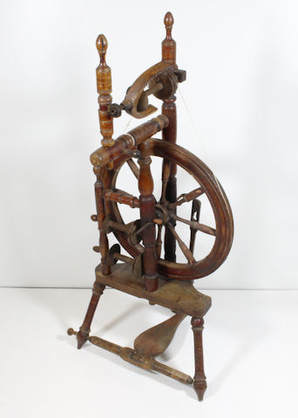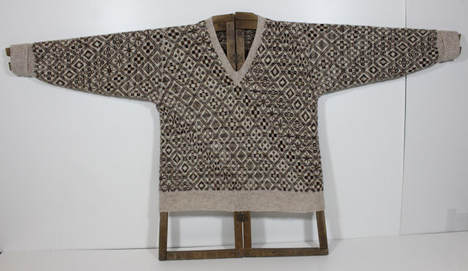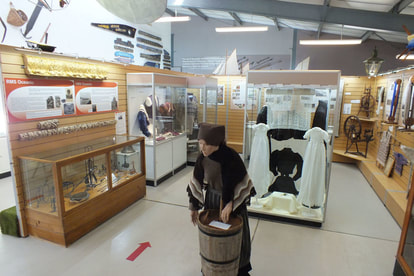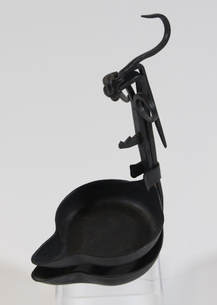Recent History
|
Domestic Life
Since about 1800, Scalloway’s fortunes waxed and waned in harmony with the fishing industry, but agricultural work and domestic life changed little until the 20th century was well under way. Traditionally, for those with crofts (smallholdings of land), much of the labour fell to the women and older children in the family, since the men were involved in fishing. Truck System
Throughout Shetland in the 19th century, woollen produce was sold through local merchants. Many of these merchants were involved in a truck system in which the producers were paid in "fancy goods, such as clothing, dresses, flowers, ribbons and such things as that", instead of money. Although this system was officially abolished in 1831, it continued unofficially into the early 20th century. The story of wool and its successive stages of development into yarn is covered in our exhibits. |
Work on the Land
During the last two hundred years, land work was hard and unrelenting; leisure time was rare. Women supplemented the family income by knitting using the wool from the local breed of sheep. The wool was ‘rooed’ (plucked, rather than cut), and dyed by the women using colours derived from natural sources. It was then spun into yarn of differing degrees of fineness for either lacework or knitwear. The women’s skill developed into the world-class art-form that is recognised today in gossamer woollen shawls and scarves, and the colourful, intricately-patterned knitwear that has come to be known as ‘Fair Isle’. Our displays include examples of fine local lacework and Fair Isle knitwear. Growing Prosperity
As prosperity grew in the village, so did the number of merchants, tradesmen and shops. The museum displays include a selection of interesting products on sale during the 19th and early 20th centuries. |










